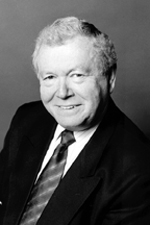 By Rabbi Dow MarmurJERUSALEM– In order to describe the differences within Orthodoxy we often use adjectives: “modern” for those who seek to combine Torah with derech erets (the way of the world); “national” for many of the settlers; and, of course, “ultra” for haredim. But we can’t count all haredim as one group either. There’re, for example, sharp divisions between Oriental (Sephardi) and Ashkenazi (“Lithuanian”/litvak) ultra-Orthodox Jews. That’s why Israel has two chief rabbis, one Ashkenazi and one Sephardi.
By Rabbi Dow MarmurJERUSALEM– In order to describe the differences within Orthodoxy we often use adjectives: “modern” for those who seek to combine Torah with derech erets (the way of the world); “national” for many of the settlers; and, of course, “ultra” for haredim. But we can’t count all haredim as one group either. There’re, for example, sharp divisions between Oriental (Sephardi) and Ashkenazi (“Lithuanian”/litvak) ultra-Orthodox Jews. That’s why Israel has two chief rabbis, one Ashkenazi and one Sephardi.
The divisions within the haredi community are often discernable only to those with inside knowledge, but occasionally they spill over to the public realm. The issue of conversions of new immigrants performed by the IDF rabbinate is a case in point. A number of olim, mainly but not exclusively from the former Soviet Union, are Israeli citizens without being recognized as Jews by Orthodox rabbinic authorities. When they join the IDF, their status is often sorted out and, whenever necessary, they’re formally converted by the military rabbis in full compliance with Jewish law.
The Sephardi authorities, with Rabbi Ovadiah Yosef as their head, have decided to declare such conversions valid. Perhaps to challenge their counterparts and/or grab the entire conversion apparatus for themselves, the Ashkenazim have declared them to be null and void. The real issues are probably unconnected to the matter in hand but and the result of long-standing political tensions. In the meantime, however, these young women and men who’ve committed themselves to defend the Jewish state and have undergone the necessary halachic requirements are having their status challenged.
The two haredi communities aren’t internally homogenous either. The divisions between the vaguely mystic Hasidim and their rationalist opponents (the “Lithuanians”) within the Ashkenazi community go back several centuries. And many of the Hasidic sects are in turn in constant battle with each other – for the sake of Heaven, of course.
Of late, there has also emerged a new split within the Sephardi community. One of its rabbis, Haim Amsalem, was born in Algeria in 1959 and immigrated with his family to Israel in 1970. He served as a community rabbi and in 2006 was elected to the Knesset on behalf of the (Sephardi) Shas party. He was re-elected in 2009 but a year later expelled for expressing his own opinions rather than towing the party line. He has refused to resign his seat and continues to serve as an independent in every sense of the word.
He believes that the time has come to restore Sephardi Orthodoxy to its historical moderate roots. Calling his movement Am Shalem (A complete people) which is the Hebrew form of his surname, Amsalem wishes to fight the extremism that has crept in because of the Ashkenazi influence. He advocates inter alia a more moderate approach to conversion in line with Ovadiah Yosef’s ruling about the IDF. Recently he has even expressed support for civil marriage. Welcome to the 21st century!
No doubt there’re internal political reasons behind Amsalem’s maverick status. Whatever they may be, his stance is also an apt illustration of how inappropriate and misleading it is to look at Orthodoxy as a monolithic and intransigent movement. Divisions exist there like everywhere else. On the whole this is very wholesome even if, despite Amsalem’s slogan, we remain an incomplete people much of it caused by the damage we inflict on ourselves and on each other.
*
Rabbi Marmur is spiritual leader emeritus of Holy Blossom Temple in Toronto. He now divides his year between Canada and Israel